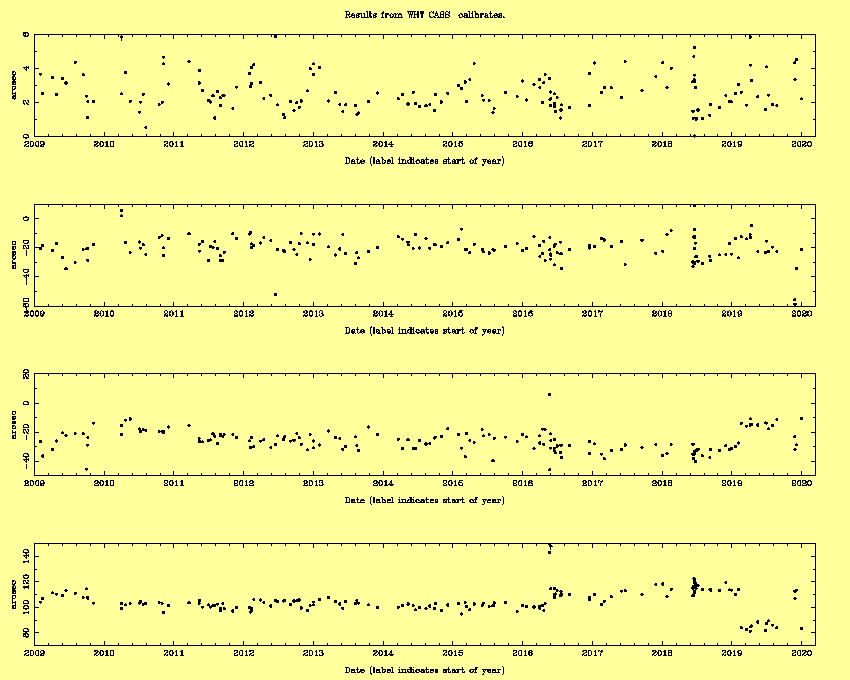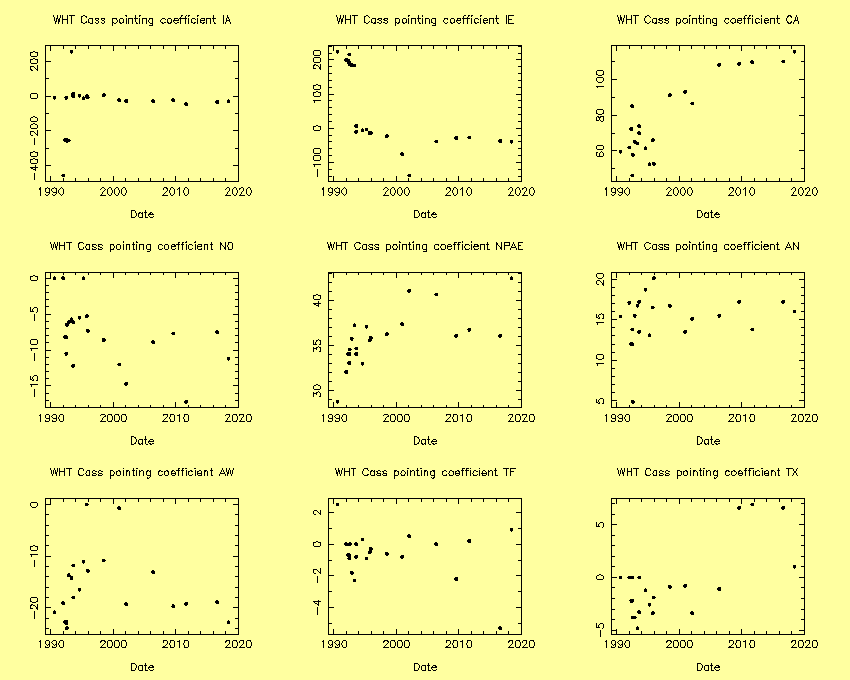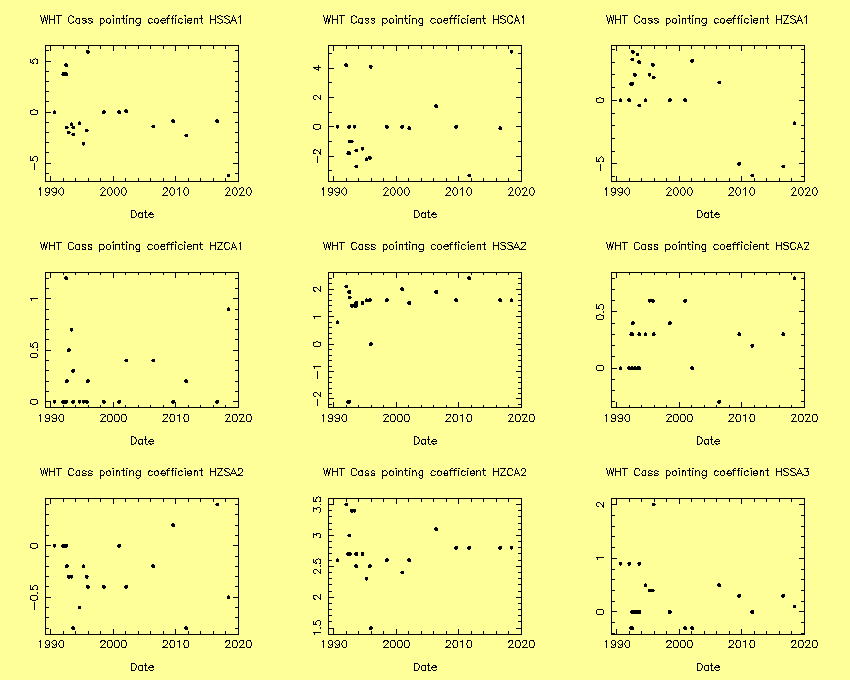WHT pointing
The telescope typically points with an accuracy of ~ 1.5 - 2 arcsec
rms at Cassegrain and prime focus, and ~ 3 arcsec rms at Nasmyth,
depending on when the 21-coefficient pointing model for each focal
station was last refined. Below are described the tests carried
out to update these coefficients on (1) short timescales and
(2) longer timescales.
(1) Quick pointing tests (7-star CALIBRATEs)
At intervals, ideally every few weeks, and at least once after each
instrument change,
a short pointing test (CALIBRATE) is carried out. During the CALIBRATE,
the telescope is successively pointed at 7 stars near the meridian, and
the 3 coefficients of the pointing model
which are most likely to change are re-measured:
the azimuth and elevation zero points ('index errors' IA, IE) and the
non-perpendicularity of elevation and pointing axes
('collimation error' HC).
The test also calculates an rms pointing accuracy (albeit one obtained over
a restricted range of azimuth near the meridian).
The figure below shows these four numbers (rms, IA, IE, HC)
plotted against date,
for the WHT Cassegrain focus:

The top panel of the plot ('Rms') may include a few outliers
contributed by tests
carried out in poor conditions (bad weather or technical problems).
At any given time, the median of the plotted values gives a reasonable
indication of the pointing rms to be expected on-sky, near the meridian.
Measurements made in 2015 indicate that away from the meridian,
the rms is typically higher by a factor of 1.5 - 2.
Click on the links below for similar plots
for other focal stations:
(2) Full pointing tests
Whenever the rms has drifted upwards from the typical values
quoted above, a
full pointing test, involving observation of ~ 100 stars, is carried
out.
The history of the 21 Cassegrain-focus pointing coefficients
since 1990
is shown below. Most of the coefficients have changed little with
time, despite the many changes in loading of the telescope structure
over the last three decades. For an explanation of the coefficient names
(e.g. TF = tube flexure),
see Pat Wallace's TPOINT manual (Starlink User Note 100).








